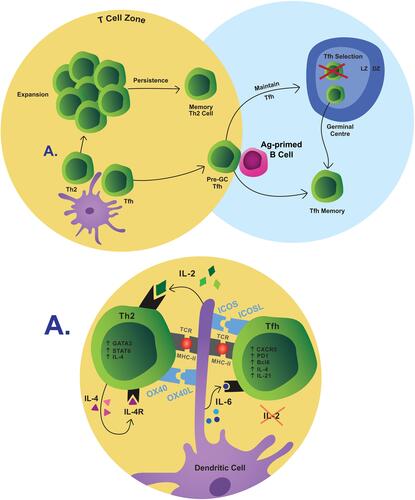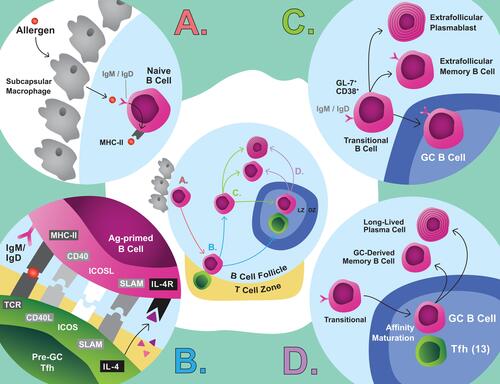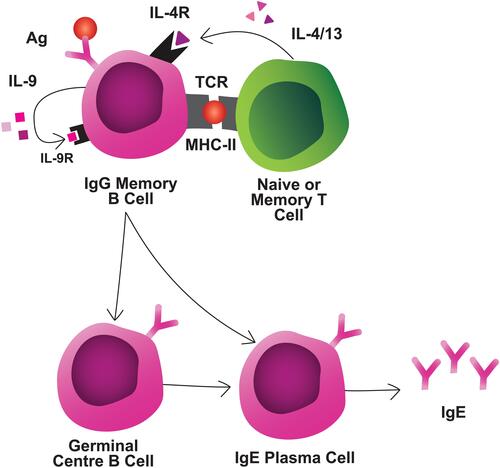Figures & data
Figure 1 Simplified pathway of memory T-cell differentiation. T-cell fate is decided in part by interactions with DCs. Th2 cells expand and contract, the remaining of which are retained as memory. Tfh maturation continues when they interact with B cells at the T/B border and when selected over the course of a GC reaction. Some of these cells persist as memory Tfh cells.
Abbreviations:Ag, antigen; LZ, light zone; DZ, dark zone.

Figure 2 Simplified pathway of MBC differentiation. (A) Naive B cells capture antigen from subcapsular macrophages, which initiates differentiation. (B) These cells are activated by pre-GC Tfh cells. (C) These cells enter an intermediate phase where extrafollicular fate decisions are made, or the cells migrate to the GC. (D) GC B cells affinity mature and are selected through interactions with Tfh cells to leave the GC as a MBC or LLPC.
Abbreviation:Ag, antigen.

Figure 3 Interactions during memory reactivation. MBCs interact with naive or memory T cells through TCR/MHC and IL-4/IL-4R interactions, at a minimum. MBCs secrete autocrine/paracrine IL-9 which is required for MBC reactivation. MBCs can differentiate rapidly into IgE-secreting PCs, or first enter GCs for additional diversification prior to IgE PC differentiation.
Abbreviation:Ag, antigen.

